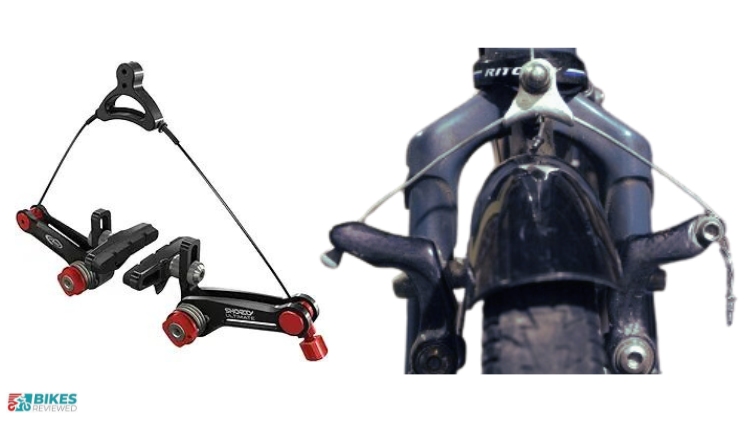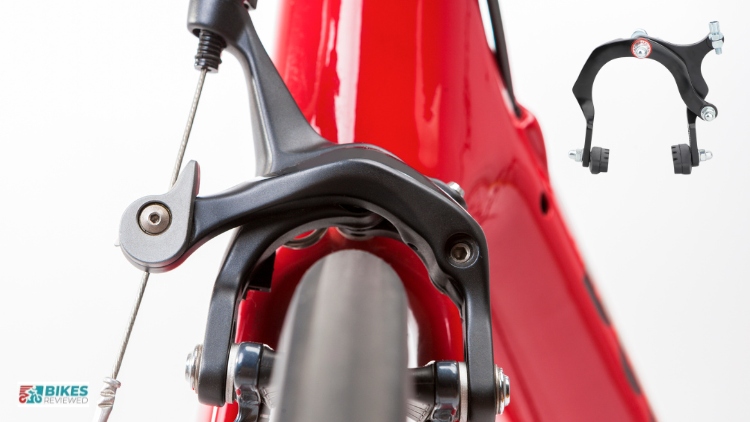When it comes to choosing the right brakes for your bike, the options can be a bit overwhelming. Two popular choices that often leave riders scratching their heads are cantilever brakes and V brakes.
Let's explore the characteristics, advantages, and disadvantages of both types of brakes which are Cantilever Brakes and V Brakes in simple terms, helping you make an informed decision for your biking adventures.
Cantilever Brakes

Cantilever brakes have been around for quite some time and are recognized by their distinctive "U" shape. These brakes are mounted on the bicycle frame and fork with a pair of brake arms extending downward. A cable pulls on these arms, causing the brake pads to squeeze against the rim, resulting in the bike coming to a stop.
Advantages of Cantilever Brakes:
- Mud Clearance: One significant advantage of cantilever brakes is their ample mud clearance. This makes them a preferred choice for off-road and cyclocross bikes, as they are less likely to get clogged with mud and debris.
- Versatility: Cantilever brakes are versatile and can accommodate various tire sizes, making them suitable for a wide range of bicycles.
- Ease of Wheel Removal: Cantilever brakes often provide easier access for wheel removal due to their design, which can be a practical feature for quick tire changes or maintenance.
Disadvantages of Cantilever Brakes:
- Modulation: Cantilever brakes are sometimes criticized for their lack of modulation, which refers to the ability to control braking power smoothly. Riders may find it challenging to achieve a gradual, controlled stop with cantilever brakes.
- Less Power: Compared to some other brake types, cantilever brakes may offer less stopping power. This can be a concern for riders who require strong braking performance in various conditions.
V Brakes

V brakes, short for linear-pull brakes, are recognized by their V-shaped brake arms. These arms are attached to the bicycle frame or fork, and when the brake lever is engaged, the arms move towards each other, bringing the brake pads into contact with the rim.
Advantages of V Brakes:
- Stopping Power: V brakes are known for their excellent stopping power. They provide strong and reliable braking performance, making them a popular choice for mountain bikes, hybrid bikes, and commuter bikes.
- Modulation: V brakes offer better modulation compared to cantilever brakes, allowing riders to apply varying amounts of braking force smoothly and precisely.
- Ease of Adjustment: V brakes are relatively easy to adjust and maintain. This can be advantageous for riders who prefer a hassle-free braking system.
Disadvantages of V Brakes:
- Mud Clearance: V brakes may have less mud clearance compared to cantilever brakes, making them potentially more prone to performance issues in muddy conditions.
- Compatibility: V brakes may require specific frame and fork mounts, limiting their compatibility with certain bicycle models. This is something to consider when upgrading or replacing brakes on an existing bike.
In the cantilever brakes vs. V brakes debate, the right choice depends on your specific riding needs and preferences. Cantilever brakes shine in muddy conditions and offer versatility, while V brakes excel in stopping power and modulation. Consider the type of riding you'll be doing most frequently, and choose the brakes that align with your priorities for a safer and more enjoyable biking experience.
Brake Performance in Different Environments
Off-Road Adventures:
- Cantilever Brakes: For off-road biking enthusiasts who frequently navigate muddy trails and cyclocross courses, cantilever brakes are a solid choice. Their superior mud clearance ensures that the brakes remain effective even in challenging conditions, preventing the buildup of debris that can compromise braking power.
- V Brakes: While V brakes provide excellent stopping power, their somewhat limited mud clearance may pose challenges in extremely muddy terrains. Riders who enjoy off-road adventures in such conditions might find cantilever brakes more suitable.
City Commuting:
- Cantilever Brakes: The versatility of cantilever brakes makes them suitable for city commuting, especially if you encounter varying road conditions. Their compatibility with different tire sizes and ease of wheel removal can be advantageous in urban settings where quick maintenance might be necessary.
- V Brakes: The strong stopping power and modulation of V brakes make them well-suited for city commuting, where quick and precise stops are often required. Their ease of adjustment can also be appreciated in a city environment where maintenance convenience is key.
Mountain Biking:
- Cantilever Brakes: While cantilever brakes might struggle to match the stopping power of V brakes, their mud clearance can be a significant asset on muddy mountain trails. Mountain bikers who prioritize mud resistance might find cantilever brakes to be a reliable choice.
- V Brakes: The superior stopping power of V brakes makes them popular among mountain bikers tackling steep descents. Their efficient modulation allows riders to control their speed with precision, enhancing overall safety on challenging terrains.
How to Choose the Right Brake System?
Ultimately, the decision between cantilever brakes and V brakes comes down to your specific biking preferences and the environments in which you ride most frequently. Consider the following factors:
- Terrain and Conditions: If you frequently ride in muddy or wet conditions, the mud clearance of cantilever brakes might be crucial. For dry and varied terrains, the stopping power and modulation of V brakes could be more appealing.
- Bike Compatibility: Check your bike frame and bike fork for compatibility with either brake type. Some frames are specifically designed for one type of brake, which may influence your decision.
- Riding Style: Consider your riding style and the type of bike you own. Different styles of biking, such as cyclocross, mountain biking, or city commuting, may benefit from specific brake features.
Overall Review
Both cantilever brakes and V brakes have their merits, and the right choice depends on your unique biking needs.
Take the time to assess your riding conditions and preferences, and you'll be better equipped to make an informed decision that enhances your biking experience.
